Prices in AUD. Shipping worldwide. Flat rate $8 postage per order within Australia. International by weight calculated at checkout. Read full terms.
-
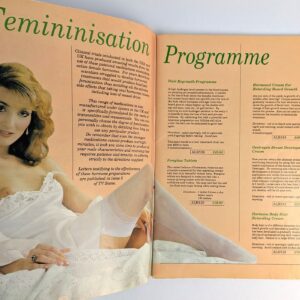
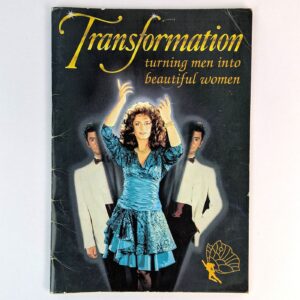
Transformation: Turning Men into Beautiful Women
AU$200.00 Read MoreAdd to cartTransformation
Manchester: Transformation, No date.Mail-order catalogue for Transformation, the English transsexual mail-order company founded in 1984 by Stephanie Anne Booth (1946-2016). The firm supplied clothing, cosmetics, prosthetics, wigs, and accessories for transsexual and cross-dressing clientele, and became one of the first British businesses to openly serve this market. Booth’s entrepreneurial ventures under the Transformation banner later extended to a gender identity clinic, a contact and dating magazine, and other related services. Her activities occasionally drew controversy, culminating in her arrest for running a bawdy house in connection with a massage service operated under the same name. This catalogue reflecting some of the risque aspects of her business, featuring titillating photography and fetishwear alongside transformation aids and fashion items.
-

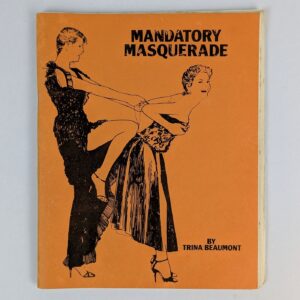
Mandatory Masquerade
AU$400.00 Read MoreAdd to cartTrina Beaumont
Sydney [Ulladulla]: The Seahorse Club of Australia, 1981.Illustrated novella published by Seahorse, Australia’s first transgender support organisation. Authored by Trina Beaumont (formerly Trina Taylor), long-time editor of the club’s newsletter, Feminique, and a media advocate for the organisation during the 1970s. At the time, Seahorse primarily served heterosexual men who enjoyed cross-dressing, presenting members as ordinary men who occasionally adopted female attire. The novella includes illustrations by Di Ward and represents a rare example of early Australian transgender literature and community-produced publishing. A single copy recorded in OCLC, at the State Library of New South Wales.
-
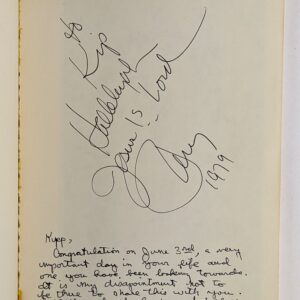
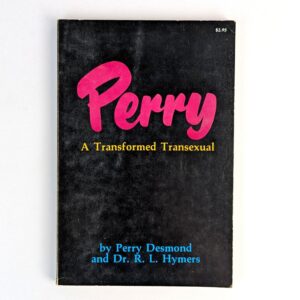
Perry: A Transformed Transexual
AU$200.00 Read MoreAdd to cartPerry Desmond; R. L. Hymers
Ironton: Metamorphis Books, 1978.First edition, first printing, of the self-told story of Perry Desmond (1936-1984), who worked as a male prostitute before opening an occult shop, transitioning, finding God, and detransitioning. This copy inscribed by Perry to the front flyleaf with another religious gift inscription to the same owner below.
-

Feelings: A Transsexual’s Explanation of a Baffling Condition
AU$150.00 Read MoreAdd to cartStephanie Castle
Vancouver: Perceptions Press, 1992.A personal introduction to the subject by Canadian trans activist and founder of the Zenith Foundation Stephanie Castle (1925-2017).
-
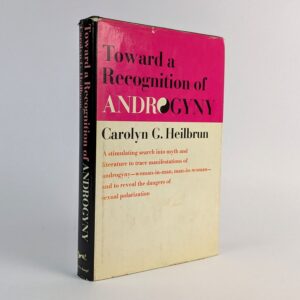
Toward a Recognition of Androgyny
AU$40.00 Read MoreAdd to cartCarolyn G. Heilbrun
New York: Alfred A. Knopf, 1973.A stimulating search into myth and literature to trace manifestations of androgyny–woman-in-man, man-in-woman–and to reveal the dangers of sexual polarization.
-
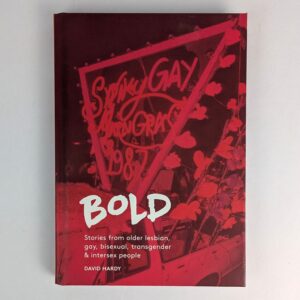
Bold: Stories from Older Lesbian, Gay, Bisexual, Transgender & Intersex people
AU$50.00 Read MoreAdd to cartDavid Hardy; Elizabeth Whiley
Panton Hill: The Rag and Bone Man Press, 2015. -
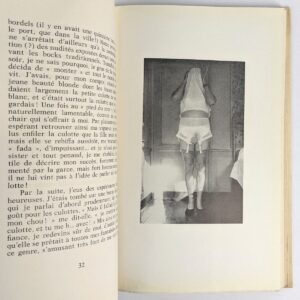
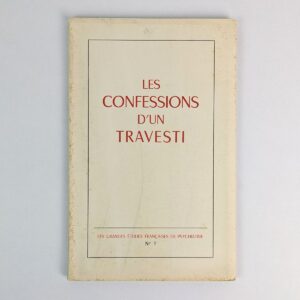
Les Confessions d’un Travesti
AU$100.00 Read MoreAdd to cart[Eric Losfeld]
Paris: Le Terrain Vague, 1956.Les Grandes Etues Francaises de Psychiatrie No. 1, an aggrandizing imprint and seemingly a once-off published by Eric Losfeld’s Le Terrain Vague imprint. Autobiographical psycho-social confessions of a 43 year old married heterosexual male cross-dresser and female underwear fetishist. Illustrated with 5 photographic plates of the author in various states of undress.
-

On Christopher Street: Transgender Stories
AU$80.00 Read MoreAdd to cartMark Seliger
New York: Rizzoli, 2016.Photo book of the transgender community in New York’s Greenwich Village.
-

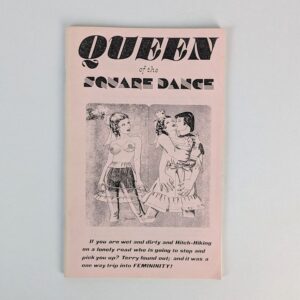
Queen of the Square Dance
AU$50.00 Read MoreAdd to cartAnonymous
: No publisher, No date.Reprint of an anonymous femdom forced feminisation crossdressing fiction. “If you are wet and dirty and Hitch-Hiking on a lonely road who is going to stop and pickup you up? Terry found out; and it was a one way trip to FEMININITY!” Cover illustration by Erica, dated 1977.
-
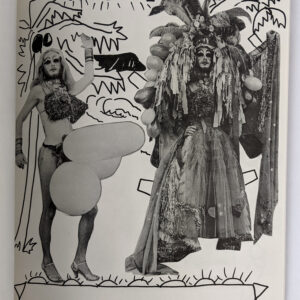

The Official Cockettes T.M. Paper Doll Book
AU$180.00 Read MoreAdd to cartJohn Flowers; Clay Geerdes
San Francisco: Last Gasp, 1971.Paper dolls of the acid drag hippie theatre troupe, Cockettes, all dressed in their finest drag for their New York City trip.
-
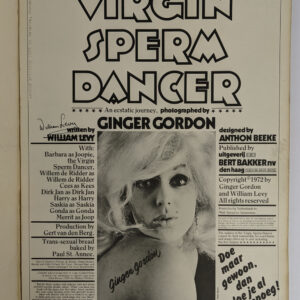
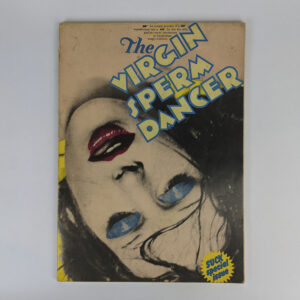
The Virgin Sperm Dancer
AU$600.00 Read MoreAdd to cartWilliam Levy; Ginger Gordon
The Hague: Uitgeverij Bert Bakker, 1978.An ecstatic journey of a boy transformed into a girl for one day only, and her erotic adventures in Amsterdam, magic centrum. A classic publication from the age of sexual liberation, The virgin sperm dancer is an early photobook which illustrates the story of Joop, a young Dutch man who experiences a day transformed as Joopie, a sexually awakened woman. Published as a Suck Special Issue of the Amsterdam-based pornography magazine Suck, The virgin sperm dancer clearly aims to titillate with its uncensored graphic photographs of the escapades in this fantasy. However through the lengthy narrative and exploration of the versatility of sexual experience, Sperm Dancer finds itself as a prototype for later works that explore sexual freedom and concepts of gender. Through depictions of free love in Amsterdam in the 70s with a focus on transsexuality, bisexuality, transvestism, and homosexuality, Sperm dancer avoids gender paradigms of masculinity and power, and includes women’s sexual empowerment and orgasm as a focus of the work. Unusually for a sex magazine, this standalone publication does not appear to pitch its eroticism to a particular sexuality but rather embraces the versatility of sexual experience as being its greatest appeal. The virgin sperm dancer was immediately influential and homaged on the cover of the September 1972 issue of London Oz. A second edition was published in 1978. Suck is touted as the first European sex newspaper and was launched in London in 1969 before moving to Amsterdam to avoid England’s anti-obscenity laws. Written by William Levy. Photographs by Ginger Gordon. This second printing copy signed by William Levy on the title page and inscribed by him to the wrappers verso, For Marta Norman – I became you – Bill 25 IX 78, and with the promotional flyer reproducing the title page laid in.
-
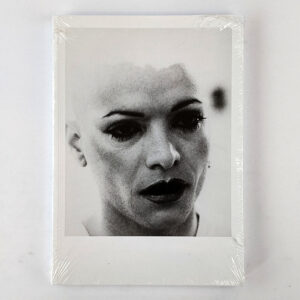
T*
AU$50.00 Read MoreAdd to cartGiordano Bonora
Milan: Mousse Publishing, 2019.“This book is inspired by the pictures that Giordano Bonora, a young streetcar operator and aspiring photographer, took of Bolognas small transgender community in 1980 (although it would be more correct to speak, in this case, of proto-Transgenderism). Reproduced here for the first time, these raw and gilded images reflect–during a period in Italy characterized by subversive movements and political revolts that were not just rooted in questions of identity–attempts made by T* people at a construction of the self outside the binary logic of the genotypically XY male/genotypically XX female.” (publisher’s blurb) This copy in the publisher’s plastic wrap.
-
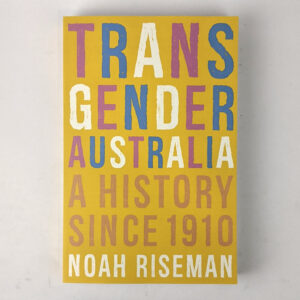
Transgender Australia: A History Since 1910
AU$40.00 Read MoreAdd to cartNoah Riseman
Melbourne: Melbourne University Press, 2023.“The first book on Australian trans history exploring the lives and impacts of trans and gender-diverse Australians. Trans and gender diverse people have always been present in Australian life, whether they’ve lived quiet lives in the country, performed in cabaret shows, worked on the streets or run for parliament. But over the last century there have been remarkable changes in how they have identified and expressed themselves. Transgender Australia is the first book to chart the changing social, medical, legal and lived experiences of trans and gender diverse people in Australia since 1910. Drawing on over a hundred oral history interviews and previously unexamined documents and media reports, it highlights how trans people have tried to live authentically while navigating a society that often treated them like outcasts.” (publisher’s blurb)
-
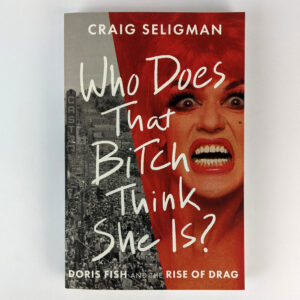
Who Does That Bitch Think She Is? Doris Fish and the Rise of Drag
AU$35.00 Read MoreAdd to cartCraig Seligman
Sydney: Hachette, 2023.“An exciting new history of drag told through the life of the remarkable, flawed, and singular Australian-born Doris Fish. In the 1970s, gay men and lesbians were openly despised and drag queens scared the public. Yet that was the era when Doris Fish (born Philip Mills in 1952) painted and padded his way to stardom. He was a leader of the generation that prepared the world not just for drag queens on TV but for a society that welcomes and even celebrates queer people. How did we get from there to here? In Who Does That Bitch Think She Is? Craig Seligman looks at Doris’s short but overstuffed life as a way to provide some answers. There were effectively three Dorises – the quiet visual artist, the glorious drag queen, and the hunky male prostitute who supported the other two. He started performing in Sydney in 1972 as a member of Sylvia and the Synthetics, a psycho troupe that represented the first anarchic flowering of queer creative energy in the post-Stonewall era. After moving to San Francisco in the mid-70s, he became the driving force behind years of sidesplitting drag shows that were loved as much as you can love throwaway trash – which is what everybody thought they were. No one, Doris included, perceived them as political theater, when in fact they were accomplishing satire’s deepest dream: not just to rail against society, but to change it. Seligman recounts this dynamic period in queer history – from Stonewall to AIDS – giving insight into how our ideas about gender have broadened to make drag the phenomenon we know it as today. In a book filled with interviews and letters about a life that ricocheted between hilarity and tragedy, he revisits the places and people Doris knew in order to shed light on the multi-hued era that his remarkable life encapsulated.” (publisher’s blurb)
-
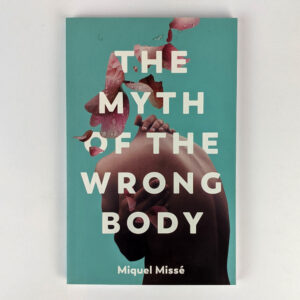
The Myth of the Wrong Body
AU$25.00 Read MoreAdd to cartMiquel Misse
Cambridge: Polity, 2022.“The most popular narrative about transsexuality suggests that some people are born in the wrong body — that their bodies do not correspond to their inner experience and that their bodies should therefore be transformed. But in the view of the sociologist and trans activist Miguel Misse, this narrative is a harmful myth. It is rooted in a medical paradigm that typically leads to medical intervention to the use of hormones and surgical operations. By proposing a particular solution (modifying ones body), doctors and psychiatrists make it difficult for trans people to overcome malaise about their body in other ways and prevent them from recognizing the burden of social norms. Drawing on his own personal experience, Misse makes the case for a different way of thinking about trans embodiment which focuses on gender identity. The trajectory that leads people to become trans is shaped by the rigidity of gender norms, where the only two models available to individuals are the masculine man and the feminine woman. But these are not the only possible choices, and by critically interrogating the rigidity of gender norms, Misse opens up a different way of thinking about being trans, beyond the essentialism of the medical paradigm.” (publisher’s blurb) Translated from Spanish by Frances Riddle.
-
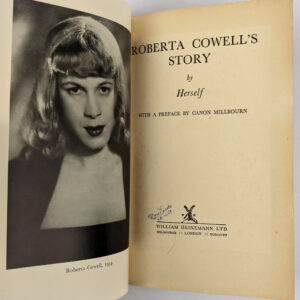
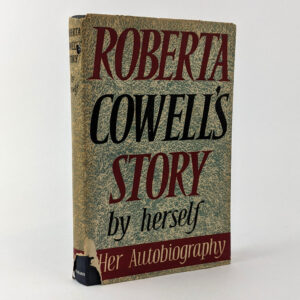
Roberta Cowell’s Story by Herself
AU$1,000.00 Read MoreAdd to cartRoberta Cowell
London: William Heinemann, 1954.Scarce autobiography of British race car driver, WWII fighter pilot, and first known British trans woman to undergo gender-affirming surgery in 1948 after Michael Dillon (British physician and the first trans man to undergo FtM surgery) performed an inguinal orchiectomy (removal of the testicles) on Cowell.
-
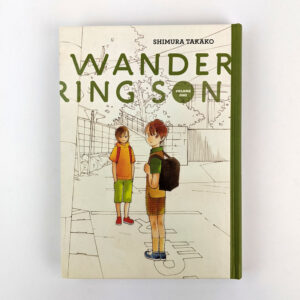
Wandering Son (Volume One)
AU$150.00 Read MoreAdd to cartShimura Takako
Seattle: Fantagraphics Books, 2011.The first in an eight volume series by Takako which explores the friendship between two transgender adolescents, Suichi and Yoshino.
-

Sons of the Movement: FtMs Risking Incoherence on a Post-Queer Cultural Landscape
AU$55.00 Read MoreAdd to cartJean Bobby Noble
Toronto: Women’s Press, 2006.“Documents the female-to-male (FtM) transition process from an insider’s point of view, and details the limitations of both surgical procedures and pronouns. J. Bobby Noble challenges both the expectations of masculinity and white masculinity. As a result, this text is equally invested in creating both gender trouble and race trouble, calling for a new provocative analysis of the field of gender studies.” (publisher’s blurb)
-
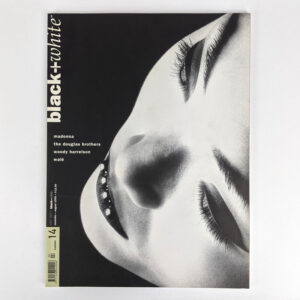
Not Only Black + White Magazine Number 14
AU$10.00 Read MoreAdd to cartMarcello Grand
Sydney: Studio Magazines, 1995.Single issue of successful Australian photography magazine, (not only) Black+White. Published between 1992 and 2007 Black+White was a coffee table format magazine which featured work from some of the world’s top photographers, often nude or semi-nude portraiture, together with interviews with photographers and celebrities and articles on popular culture and current events. In this issue: The Douglas Brothers, Spencer Tunick, Alex Donnini, Joyce Baronio, Brad Roaman, Richard Weinstein, Michael Burns, Berjot and Rosa, Renato Grome, James Elliott, Stephanie Kelly, James Cant, Marie Baronnet, Craig Arnold, Pete Thiedeke, plus features on Madonna, Woody Harrelson, plus Jon McCormack’s computer art, AI, and cross-dressing in film.
-
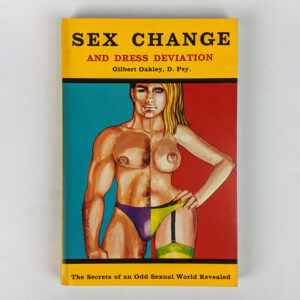
Sex Change and Dress Deviation
AU$40.00 Read MoreAdd to cartGilbert Oakley
London: Morntide, 1970.A psychological study of transvestites and transsexuals.
